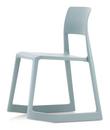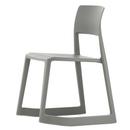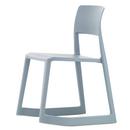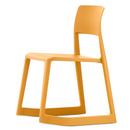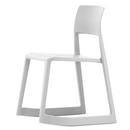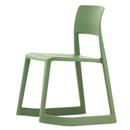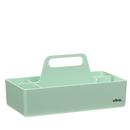Tip Ton RE, Dark grey RE

has been added to your wishlist.
Details
| Product type | Multi-purpose chair |
| Dimensions |  Dimensions in mm |
| Colours | Recycled polyethylene        Polyethylene    |
| Material | Chair: Polypropylene or recycled polypropylene (RE versions) Glides: Polyethylene or recycled polyethylene (RE versions) |
| Function & properties | Concentrated focus on pelvis and spine and thus improves circulation in legs Stackable up to 4 chairs Suitable for outdoor use The RE versions are 100 % recyclable |
| Concept | |
| Care | To clean, wiping with a damp cloth and a mild detergent is recommended. |
| Certificates & Sustainability | Vitra conform to ISO 9001: 2008 (Quality management systems) ISO 14001: 2004 (Environmental management systems) With the Tip Ton RE, Vitra is launching a Tip Ton chair on the market that is both made of recycled polypropylene and is 100 % recyclable and can thus in turn be fed back into the material and production cycle. |
| Warranty | 24 months Register product and secure extended manufacturer's warranty of 10 years |
| Accessories | Soft Seats (Typ A) |
| Product datasheet | Please click on picture for detailed information (ca. 0,3 MB). |
| Product presentation |
DesignStory

Contemporary seating, Tip Ton in the University Library Konstanz, Germany
"A forward leaning sitting position promotes concentration"
In 2008, the British designers Edward Barber & Jay Osgerby were commissioned by the Royal Society of Arts, Manufactures and Commerce to develop a furnishing concept for the new "Royal Society of Arts Academy" in Tipton, England. As Barber & Osgerby began planning, they noticed that there was a lack of innovative chairs for learning - the last was Robin Day's 1963 polypropylene chair; otherwise all chairs were based on outdated pedagogical guidelines that went from frontal knowledge transfer to silent and upright students. Consequently, the two set themselves the task of developing contemporary chairs for young people when learning: indestructible, light, quiet, stackable, colourful, fully recyclable and easy to use in production. And allowing movement. It quickly became clear that a nearly revolutionary chair was needed for a new era of learning and sitting.
Over 30 prototypes for the perfect sitting experience
At that time, Barber & Osgerby were already in loose contact with Vitra and knew that, in cooperation with the ETH Zurich, they were exploring dynamic sitting in office chairs. The two came together and the result of the ETH study was not long in coming: a forward leaning sitting position helps prevent physical discomfort and at the same time promotes blood circulation and thus the ability to concentrate. Immediately the intense design process of Edward and Jay began. The idea was a chair that was designed to stimulate different seating positions, keeping body and mind in motion. It was followed by a period of tinkering and trying out - including over 30 prototypes. Some of them were made of metal base and separate seat shell and had little in common with the final product formally. Nevertheless, they served to solve technical problems and to work out stacking and tilting function. It soon became apparent that a chair made completely of plastic was the most suitable. Since the chair should be designed for educational purposes, its durability was strictly tested before its finalisation; which was important because it was to meet the specific requirements of different countries, which meant fine adjustments of design details over and over again. Finally, the final shape and name of the original Vitra chair was confirmed: Tip Ton, a moniker which both reflects the tipping motion of the chair, and also makes a passing nod to the injection-mould in which the polypropylene Tip Ton is produced - and which itself weighs over 20 tons. And that in a chair that just brings it to 4.5 kg. Finally, the original Tip Ton also references the town of Tipton, where the school for which the chair was originally intended is located.

Not only in learning environments, but also in the office sector, Vitra's Tip Ton has achieved a permanent place
The development of the chair ultimately took so long that it was not used in the "Royal Society of Arts Academy", but exemplifies that good, purposeful design sometimes takes time. In the meantime, it is clear that the dual seating experience of the Tip Ton is not only appealing in schools, but is also suitable for office environments and the living area, making the original Vitra Tip Ton a true multi-purpose chair.






















